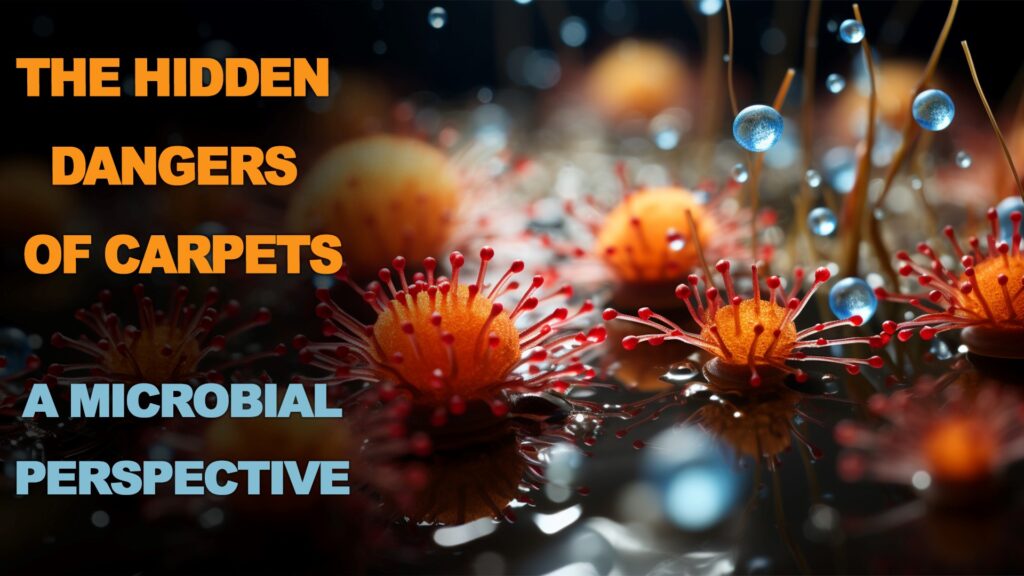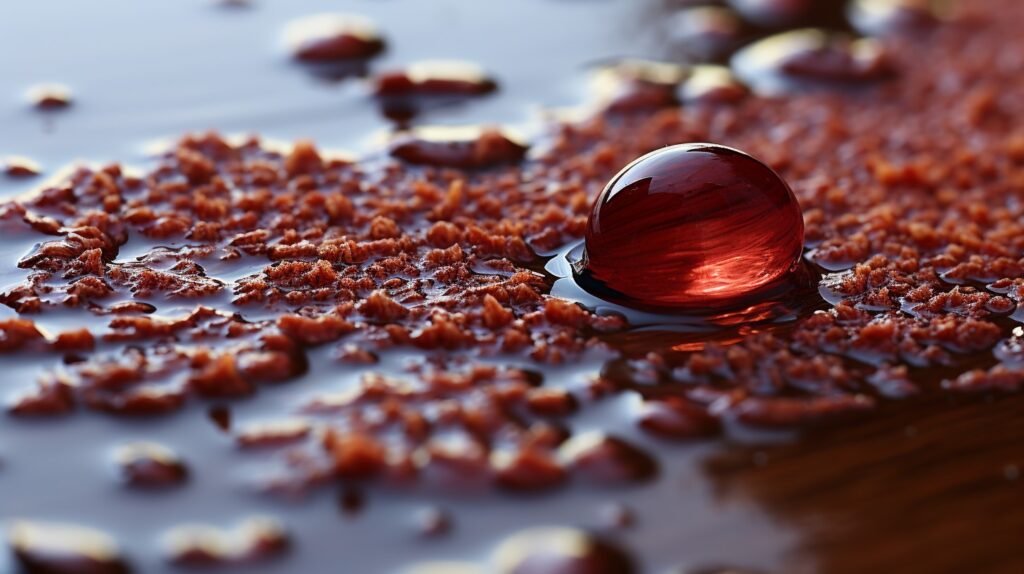
Introduction: The Underfoot Ecosystem
Carpets have been synonymous with comfort and aesthetic appeal in homes and offices for decades. Their soft, plush texture underfoot is a welcoming touch to any space. But beneath the surface of these seemingly benign floor coverings lies an ecosystem teeming with life – an invisible metropolis that exists unbeknownst to the naked eye. This ecosystem can have implications far beyond the feel-good factor of a well-chosen carpet, reaching into the realm of health and wellness in ways that often go unnoticed. Understanding this underfoot ecosystem is vital, not only for maintaining the longevity of the carpets but also for ensuring the health of those who walk upon them.
While the coziness of carpets is undeniable, there is a growing awareness of the potential risks associated with their upkeep – or lack thereof. The intricate weave of fibers that provides warmth and noise insulation also offers the perfect habitat for a range of microorganisms. The purpose of this article is to peel back the layers of the carpet, quite literally, to expose the hidden dangers and offer insights into how we can mitigate these microbial threats. By exploring the very fabric of our floor coverings, we embark on a microscopic journey that may just change the way we view the humble carpet.Understanding the Microbial World of Carpets

Defining the Microbiome
A microbiome, in its broadest definition, refers to the collection of microorganisms living in a particular environment. This term, often associated with the human gut, is equally applicable to the environment of a carpet. Each carpet hosts its unique microbiome, consisting of bacteria, fungi, viruses, and dust mites. These organisms can flourish undetected, building complex communities that interact with one another and the environment. In the fibers of every carpet lies a biome that is as complex as any found in nature, influenced by a plethora of factors such as human behavior, pet presence, and environmental conditions.
Common Microbes in Carpets
It’s no hyperbole to say that our carpets can be as populated as a small city, with bacteria like E. coli and Staphylococcus aureus, and fungi like Aspergillus and Penicillium taking up residence. Dust mites, too, thrive in the warmth and food-rich environment that carpets often provide. These microorganisms are found in the carpet’s fibers, the spills of sugary drinks, and the crumbs of food the perfect nourishment for their colonies. The extent and diversity of microbial life within a carpet are astounding and potentially alarming given the right (or wrong) conditions.
Sources of Microbial Contamination
The everyday hustle and bustle of a household or office space are the main contributors to microbial contamination in carpets. Human traffic carries in a variety of microorganisms from the outside world, which are then deposited onto the carpet’s surface. The situation is compounded when pets are a part of the equation – with their dander, saliva, and external dirt acting as additional sources of microbial life. Furthermore, incidental spills, food particles, and moisture can create a microbe-friendly environment, leading to a proliferation of these invisible residents.
Health Implications of Carpet Microbes
Allergies and Respiratory Issues
For individuals with allergies or respiratory conditions, carpets can be a double-edged sword. The microorganisms within them can act as allergens, triggering reactions such as sneezing, itchy eyes, and asthma attacks. The severity can range from mild inconvenience to serious health concerns, especially for those with pre-existing conditions. Moreover, the detritus from dust mites, along with the fecal matter and body fragments they leave behind, can exacerbate these reactions, leading to a cycle of discomfort and illness that may often be misattributed to other causes.
Skin Infections and Irritations
The carpet’s microbiome is not solely a concern for the respiratory system. Skin contact with carpeted surfaces, which can often occur in homes where individuals sit or play on the floor, can lead to a variety of dermal afflictions. From simple irritations to more severe infections, the pathogens nestled within the weaves of a carpet can breach the body’s first line of defense through cuts or abrasions. Children, with their tender skin and propensity for floor-based activities, are particularly at risk, making the sanitization of carpets a paramount concern for parents.
Long-term Health Risks
While acute reactions to carpet microbes can be immediately apparent, there are also less visible, long-term risks. Continuous exposure to certain microorganisms can potentially lead to a weakened immune system, making individuals more susceptible to various illnesses. There’s also a risk of developing chronic conditions due to prolonged exposure to allergens and irritants. The health implications extend beyond mere discomfort, emphasizing the need for a closer examination of our carpet cleaning and maintenance habits.
The Compound Effect: When Cleanliness Is Not EnoughThe Illusion of Clean Carpets

The surface appearance of a carpet can be deceiving. A clean-looking carpet does not necessarily equate to a microbially clean one. The dense fibers and padding of carpets are skilled at concealing dirt, stains, and, most critically, microorganisms. A quick vacuum or a run-over with a carpet cleaner may remove superficial dirt but often leaves behind a thriving population of microbes that continue to grow and multiply undetected.
Limitations of Regular Cleaning Methods
Vacuuming, while effective at removing surface debris, often fails to reach the deeper layers of the carpet where microbes reside. Similarly, shampooing may tackle stains but does little to address the underlying microbiological landscape. Even professional cleaning services, though more thorough, cannot guarantee the complete eradication of all microbial life. The effectiveness of these cleaning methods is frequently overestimated, and their limitations can leave carpets as microbial hotbeds despite our best efforts.
The Role of Humidity and Temperature
The environment in which a carpet exists plays a significant role in the survival and proliferation of microorganisms. Humidity and temperature are two critical factors; high humidity provides the moisture that many microbes require to thrive, while warmer temperatures can accelerate their growth. These conditions, often found indoors where carpets are prevalent, can turn a simple floor covering into a microbial breeding ground.
Material Matters: Synthetic vs. Natural Fibers
The very makeup of a carpet can influence its microbial population. Synthetic fibers, such as nylon and polyester, can be less hospitable to microbes than natural fibers like wool, which can retain moisture and provide a more conducive environment for growth. The choice of material, pile density, and weave tightness can all have implications for the carpet’s cleanliness on a microbial level. It’s a detail often overlooked in the selection process but one that carries significant weight in the quest for a healthier indoor environment.
Innovative Strategies for a Healthier Underfoot Environment
Antimicrobial Treatments and Coatings
In response to the need for cleaner carpets, advancements in antimicrobial treatments offer a promising solution. These treatments are designed to inhibit the growth of bacteria, mold, and mildew, creating a hostile environment for unwanted microbes. They work by disrupting the vital processes of these microorganisms, leading to their eventual demise. Some carpets come pre-treated with these substances, while others can be treated post-installation. However, it’s essential to consider the chemicals used in these treatments, as they can sometimes contribute to indoor air quality concerns.
Probiotic and Enzymatic Cleaners
Moving away from traditional chemical treatments, the rise of probiotic and enzymatic cleaners presents an eco-friendly approach to managing carpet microbes. Probiotic cleaners introduce beneficial bacteria that compete with pathogenic microbes, reducing their numbers naturally. Enzymatic cleaners, on the other hand, use enzymes to break down organic matter, depriving harmful microbes of their food source. These methods can be more sustainable and safer for humans and pets, aligning with a growing demand for greener cleaning solutions.
Regular Maintenance and Professional Deep Cleans
Despite innovations in treatments, the importance of regular maintenance cannot be overstated. A consistent cleaning regimen that includes frequent vacuuming with HEPA filters, immediate stain removal, and periodic deep cleans can greatly reduce microbial load. Professional deep cleaning, ideally twice a year, can get to the root of the carpet, extracting embedded microbes and allergens that daily cleaning misses. This regular maintenance not only extends the life of the carpet but also maintains a healthier living and working environment.
Design Considerations for Health-Conscious Spaces
Choosing the Right Carpet
When it comes to health-conscious spaces, selecting the right carpet is as crucial as maintaining it. Carpets with low piles, tightly woven fibers, and those made with synthetic materials that are less conducive to microbial growth are preferred choices. Additionally, carpets with integrated antimicrobial properties can offer an extra layer of protection. It’s about balancing aesthetic desires with practical health considerations – a challenge for designers and homeowners alike.
Area Rugs and Removable Carpets
One strategic approach to mitigating the microbial risks of carpets is to use area rugs and removable carpet tiles. These alternatives provide the warmth and comfort of traditional carpeting but can be cleaned more thoroughly and replaced more readily as needed. This flexibility allows for more frequent and intensive cleaning, reducing the microbial burden and potentially improving indoor air quality.
Improving Indoor Air Quality and Health
Ventilation and Air Purification
Proper ventilation plays a vital role in curbing the growth of microbes in carpets. By regulating humidity and reducing moisture, ventilation helps create an environment that is less favorable for microbial proliferation. In addition, air purifiers equipped with HEPA filters can capture airborne pathogens and allergens, further reducing the health risks associated with carpet microbes.
Education and Awareness
Equipping individuals with knowledge about the hidden dangers in carpets can empower them to take proactive steps towards healthier environments. Understanding the signs of microbial growth, the importance of proper carpet selection, and the need for regular maintenance can lead to more informed decisions and practices. Public education campaigns and information dissemination through health professionals can foster a broader understanding and appreciation of this issue.
Future Perspectives
Innovations in Carpet Design
As awareness of the health implications associated with carpets grows, manufacturers are challenged to innovate. Future carpet designs may incorporate new materials and technologies that naturally repel microbes or are easier to clean thoroughly. The carpets of the future could be not just neutral in health terms but actively health-promoting, with built-in features that enhance the cleanliness and safety of our indoor spaces.
Research and Development
Continued research into the microbiology of carpets will be essential in developing these new products and cleaning methods. As our understanding of the carpet microbiome grows, so too will our ability to counteract its negative health effects. This research can inform industry standards and lead to regulations that ensure all carpets meet a minimum health-safety criterion.
Concluding Thoughts on the Hidden Dangers of Carpets
While this article has highlighted the potential risks associated with carpeted floors, it’s not an advocacy for their complete removal from our lives. Carpets offer undeniable aesthetic and comfort benefits. The aim is to foster a more nuanced understanding of their maintenance and the invisible ecosystems they harbor. With proper care, informed choices, and the use of innovative treatments and materials, we can enjoy the benefits of carpets without compromising our health.
The microbial world hidden in the fibers of our carpets is a reminder of the complex interplay between our environment and our health. By shining a light on this unseen aspect of our daily lives, we can take steps to protect ourselves and our loved ones from the hidden dangers that lie beneath our feet.